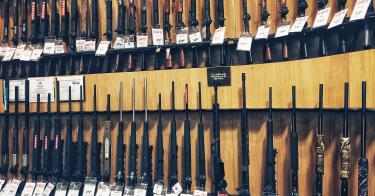Two years ago at the annual SHOT Show—the Shooting, Hunting, and Outdoor Trade Show, run by the National Shooting Sports Foundation—Second Amendment supporters felt optimism that the first year of the Trump administration would bring good things to firearm makers, sellers, and users.
This year, there was a lot less optimism.
Not all the bad news is a shock. The liberal press, and liberal activists, are delighted that firearm and ammunition sales are down since President Donald Trump took office. But I’ve warned for years that the incredible sales under President Barack Obama were not sustainable.
This was an easy prediction to make: The firearms industry has a long pattern of boom and bust, and reacts quickly to political events.
In fact, you can read the modern political history of the United States by looking at the Bureau of Alcohol, Tobacco, Firearms, and Explosives’ annual report on firearms manufacturing. Firearms manufactured went up in 1993-94 as the so-called “assault weapons ban” approached, then went down under President George W. Bush, and then went up sharply over the entire Obama presidency, culminating in a 2016 surge when it looked likely that Hillary Clinton would win the election.
After Trump won, it was inevitable that sales would decline, and that parts of the industry that bought lots of inventory in anticipation of a Clinton victory would suffer.
Anxious buyers, too, stockpiled lots of ammunition over the Obama years. Now, they’re shooting through their stockpiles.
But the real picture is one of change, not decline. Shooting participation in the U.S. continues to shift slowly away from hunting and toward target shooting at ranges, reflecting urbanization and a changing customer base.
That poses challenges to the industry, which explains the National Shooting Sports Foundation’s +One campaign to encourage shooters to bring new participants into shooting sports in general, with a special focus on hunting.
Nevertheless, the industry remains strong. This year’s show had more exhibiting firms than ever before, and next year’s SHOT Show will be even bigger.
Yet there is no denying that the firearms industry is not overly happy. On the floor of the SHOT Show, I observed a sense among the attendees that the opportunities of the past two years had faded.
True, there have been successes. The National Shooting Sports Foundation has campaigned for years to fix the National Instant Criminal Background Check System, and found success when Trump signed the Fix NICS Act into law in March 2018.
This commonsense reform will do more to keep guns out of the hands of people who shouldn’t have them than all the showboating measures backed by congressional Democrats.
And, in another win for the National Shooting Sports Foundation, most firearms, ammunition, and parts and components will soon move from the regulatory jurisdiction of the State Department to the Department of Commerce. This important reform has nothing to do with the availability of firearms in the United States, but instead will make it easier for U.S. businesses to compete for foreign contracts.
The industry also scored a win when the Department of the Interior opened up more than 250,000 new acres to hunting and fishing.
But when you combine the inevitable yet unwelcome decline in sales with the administration’s new regulations on bump stocks (which allow a semiautomatic firearm to shoot more than one round per trigger pull), plus the fact that Alcohol, Tobacco, Firearms, and Explosives regulation under Trump is—incredibly—more secretive and arbitrary than it was under Obama, you get dissatisfaction.
Throw in the administration’s complete inaction on the international front—the president has not unsigned the Arms Trade Treaty, which the U.S. continues to fund—and you get the sense that I encountered over and over again on the show floor: Trump is appreciated for who he is, not for what he has done.
In other words, not being Hillary Clinton is worth a lot. Yet on firearms, not being Clinton is a low bar.
And 2019 doesn’t look likely to bring much cheer for the industry. There is state-level silliness to contend with, like California’s ban on hunting with lead ammunition. And with a Democratic House of Representative, sensible measures like the National Shooting Sports Foundation-backed Hearing Protection Act, which would make it easier to buy suppressors, are likely going nowhere.
That’s a pity. Having been fortunate enough to shoot at Sig Sauer’s Media Range Day this year, I can testify that a suppressed rifle still makes a heck of a noise, and that a suppressor makes a huge difference in the enjoyability of target shooting.
Of course, if you make shooting easier or more enjoyable, more people will do it—which is precisely what liberals hate.
Ultimately, the firearms industry, and the interests and passions it supports, is in a good position in the United States. Sales are down, but participation is steady.
The Trump administration needs to do what it can over the next year to solidify that position. By putting Alcohol, Tobacco, Firearms, and Explosives rule-making back on a normal basis, finishing the move of firearms regulation to the Commerce Department, and unsigning the Arms Trade Treaty, the administration will be doing the right thing—and win support for more than just not being Hillary.
This piece originally appeared in The Daily Signal



